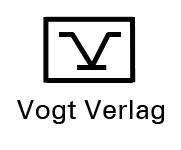Details
| Autor: | Lucas Scheuvens |
| Titel: | On Age-of-Information Aware Resource Allocation for Industrial Control-Communication-Codesign |
| Typ: | Dissertation |
| Fachgebiet: | Informationstechnik |
| Reihe: | Mobile Nachrichtenübertragung, Nr.: 95 |
| Auflage: | 1 |
| Sprache: | Englisch |
| Erscheinungsdatum: | 30.08.2022 |
| Lieferstatus: | lieferbar |
| Umfang: | 152 Seiten |
| Bindung: | Soft |
| Preis: | 69,00 EUR |
| ISBN: | 9783959470551 |
| Umschlag: | (vorn) |
| Inhaltsverzeichnis: | (pdf) |
Abstrakt in Englisch
In industrial manufacturing, Industry 4.0 refers to the ongoing convergence of the real and virtual worlds, enabled through intelligently interconnecting industrial machines and processes through information and communications technology. Ultra- reliable low-latency communication (URLLC) is widely regarded as the enabling technology for Industry 4.0 due to its ability to fulfill highest quality-of-service (QoS) comparable to those of industrial wireline connections. In contrast to this trend, a range of works in the research domain of networked control systems have shown that URLLC’s supreme QoS is not necessarily required to achieve high quality-of- control; the co-design of control and communication enables to jointly optimize and balance both quality-of-control parameters and network parameters through blurring the boundary between application and network layer. However, through the tight interlacing, this approach requires a fundamental (joint) redesign of both control systems and communication networks and may therefore not lead to short-term widespread adoption. Therefore, this thesis instead embraces a novel co-design approach which keeps both domains distinct but leverages the combination of control and communications by yet exploiting the age of information (AoI) as a valuable interface metric. This thesis contributes to quantifying application dependability as a consequence of exceeding a given peak AoI with the particular focus on packet losses. The benefi- cial influence of negative temporal packet loss correlation on control performance is demonstrated by means of the automated guided vehicle use case. Assuming small-scale fading as the dominant cause of communication failure, a series of communication failures are mapped to an application failure through discrete-time Markov models for single-hop (e.g, only uplink or downlink) and dual-hop (e.g., subsequent uplink and downlink) architectures. This enables the derivation of application-related dependability metrics such as the mean time to failure in closed form. For single-hop networks, an AoI-aware resource allocation strategy termed state-aware resource allocation (SARA) is proposed that increases the application reliability by orders of magnitude compared to static multi-connectivity while keep- ing the resource consumption in the range of best-effort single-connectivity. This dependability can also be statistically guaranteed on a system level – where multiple agents compete for a limited number of resources – if the provided amount of resources per agent is increased by approximately 10 %. For the dual-hop scenario, an AoI-aware resource allocation optimization is developed that minimizes a user-defined penalty function that punishes low application reliability, high AoI, and high average resource consumption. This optimization may be carried out offline and each resulting optimal SARA scheme may be implemented as a look-up table in the lower medium access control layer of future wireless industrial networks.
Abstrakt in Deutsch
Unter dem Überbegriff Industrie 4.0 wird in der industriellen Fertigung die zuneh- mende Digitalisierung und Vernetzung von industriellen Maschinen und Prozessen zusammengefasst. Die drahtlose, hoch-zuverlässige, niedrig-latente Kommunikation (engl. ultra-reliable low-latency communication, URLLC) – als Bestandteil von 5G – gewährleistet höchste Dienstgüten, die mit industriellen drahtgebundenen Technolo- gien vergleichbar sind und wird deshalb als Wegbereiter von Industrie 4.0 gesehen. Entgegen diesem Trend haben eine Reihe von Arbeiten im Forschungsbereich der vernetzten Regelungssysteme (engl. networked control systems, NCS) gezeigt, dass die hohen Dienstgüten von URLLC nicht notwendigerweise erforderlich sind, um eine hohe Regelgüte zu erzielen. Das Co-Design von Kommunikation und Regelung ermöglicht eine gemeinsame Optimierung von Regelgüte und Netzwerkparametern durch die Aufweichung der Grenze zwischen Netzwerk- und Applikationsschicht. Durch diese Verschränkung wird jedoch eine fundamentale (gemeinsame) Neu- entwicklung von Regelungssystemen und Kommunikationsnetzen nötig, was ein Hindernis für die Verbreitung dieses Ansatzes darstellt. Stattdessen bedient sich diese Dissertation einem Co-Design-Ansatz, der beide Domänen weiterhin eindeutig voneinander abgrenzt, aber das Informationsalter (engl. age of information, AoI) als bedeutenden Schnittstellenparameter ausnutzt. Diese Dissertation trägt dazu bei, die Echtzeitanwendungszuverlässigkeit als Folge der Überschreitung eines vorgegebenen Informationsalterschwellenwerts zu quan- tifizieren und fokussiert sich dabei auf den Paketverlust als Ursache. Anhand der Beispielanwendung eines fahrerlosen Transportsystems wird gezeigt, dass die zeit- lich negative Korrelation von Paketfehlern, die in heutigen Systemen keine Rolle spielt, für Echtzeitanwendungen äußerst vorteilhaft ist. Mit der Annahme von schnel- lem Schwund als dominanter Fehlerursache auf der Luftschnittstelle werden durch zeitdiskrete Markovmodelle, die für die zwei Netzwerkarchitekturen Single-Hop und Dual-Hop präsentiert werden, Kommunikationsfehlerfolgen auf einen Applikati- onsfehler abgebildet. Diese Modellierung ermöglicht die analytische Ableitung von anwendungsbezogenen Zuverlässigkeitsmetriken wie die durschnittliche Dauer bis zu einem Fehler (engl. mean time to failure). Für Single-Hop-Netze wird das neuarti- ge Ressourcenallokationsschema State-Aware Resource Allocation (SARA) entwickelt, das auf dem Informationsalter beruht und die Anwendungszuverlässigkeit im Ver- gleich zu statischer Multi-Konnektivität um Größenordnungen erhöht, während der Ressourcenverbrauch im Bereich von konventioneller Einzelkonnektivität bleibt. Diese Zuverlässigkeit kann auch innerhalb eines Systems von Regelanwendungen, in welchem mehrere Agenten um eine begrenzte Anzahl Ressourcen konkurrieren, statistisch garantiert werden, wenn die Anzahl der verfügbaren Ressourcen pro Agent um ca. 10 % erhöht werden. Für das Dual-Hop Szenario wird darüberhinaus ein Optimierungsverfahren vorgestellt, das eine benutzerdefinierte Kostenfunktion minimiert, die niedrige Anwendungszuverlässigkeit, hohes Informationsalter und hohen durchschnittlichen Ressourcenverbrauch bestraft und so das benutzerdefinier- te optimale SARA-Schema ableitet. Diese Optimierung kann offline durchgeführt und als Look-Up-Table in der unteren Medienzugriffsschicht zukünftiger industrieller Drahtlosnetze implementiert werden.


